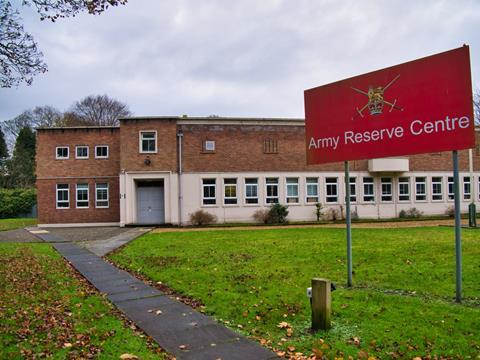Crisis caused by aging lightweight concrete spreads from school and hospital buildings to military estate
The Ministry of Defence is urgently investigating hundreds of buildings in its estate which are feared to be on the verge of collapse.
Officials are identifying military training facilities and barracks built with reinforced autoclaved aerated concrete (RAAC), a lightweight material widely used in public buildings from the 1960s to the 1980s which has now passed its 30-year lifespan.
A spokesperson for the department said: “We take safety extremely seriously and as the public would expect, we are surveying the buildings potentially affected and where this type of concrete is identified, ensure appropriate mitigations are in place.

“From a total of over 60,000 built assets, the number of Defence buildings currently being surveyed is in the hundreds.”
The investigations are part of a wider crisis in government buildings, including schools and hospitals, because of decaying RAAC.
Health minister Maria Caulfield admitted last year that 34 hospital buildings in England were at risk, a situation which was described by the boss of one affected hospital boss as a “ticking time bomb”.
In February this year, seven education unions wrote to the government demanding urgent action to ensure schools are structurally safe after a Department of Education report warned many were close to collapsing.
The report said the risk level had been escalated from “critical, likely”, to “critical, very likely” as far back as July 2021, an admission described by the unions as “truly shocking”.
Defence procurement minister James Cartlidge said risk assessments would be carried out on buildings where the presence of RAAC is confirmed to ensure “appropriate mitigation is applied and monitored”.
“Where RAAC is suspected, but not confirmed, a risk assessment and mitigation will be put in place anyway.”
The minister was responding to a question from shadow attorney general Emily Thornberry, who said it was “extremely disappointing and concerning that we are still seeing the same complacency and buck-passing that we have previously seen from ministers in relation to schools and hospitals”.
The Ministry of Justice refused to say whether RAAC was present in prisons or the court system, arguing that disclosing this would come at a “disproportionate cost”.
Thornberry added: “It is simply not good enough for the Ministry of Justice to stick their head in the sand and refuse even to answer questions about the risks in our prisons and courts, and it is equally unacceptable for the Home Office to acknowledge the risks facing our police and firefighters but duck responsibility for tackling them.”
In January, ministers at the Department of Education were accused of hiding the poor condition of schools in England after cancelling the publication of a survey.
What is RAAC?
Autoclaved aerated concrete (AAC) is different from normal dense concrete. It has no coarse aggregate, and is made in factories using fine aggregate, chemicals to create gas bubbles, and heat to cure the compound. It is relatively weak with a low capacity for developing bond with embedded reinforcement. It was used in two main forms of structural elements; lightweight masonry blocks and structural units (such as roof planks, wall and floor units).
When reinforced (Reinforced AAC: RAAC) to form structural units, the protection of the reinforcement against corrosion is provided by a bituminous or a cement latex coating, which is applied to the reinforcement prior to casting the planks. The reinforcement mesh is then introduced into the formwork and the liquid AAC mix added.
Source: SCOSS



























No comments yet